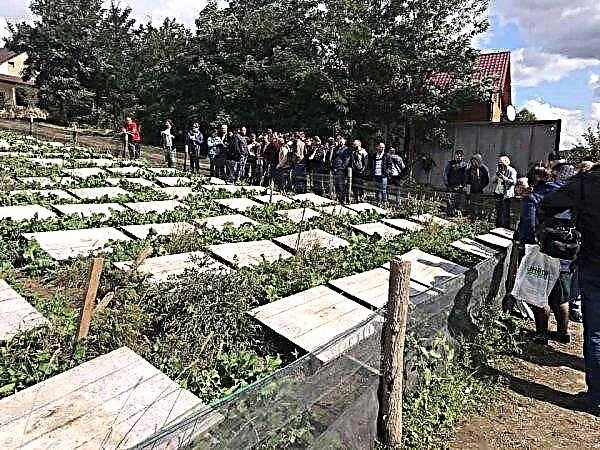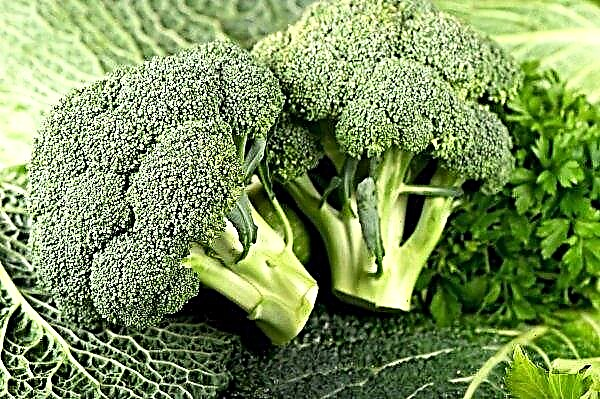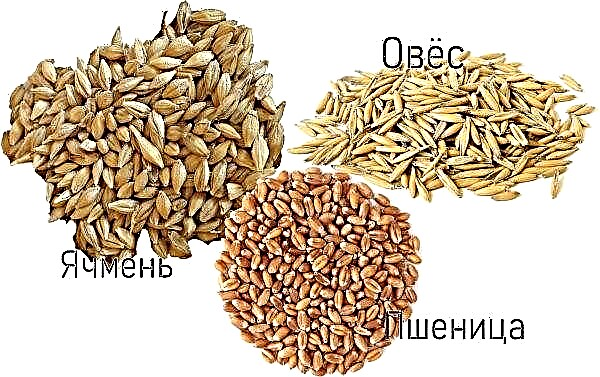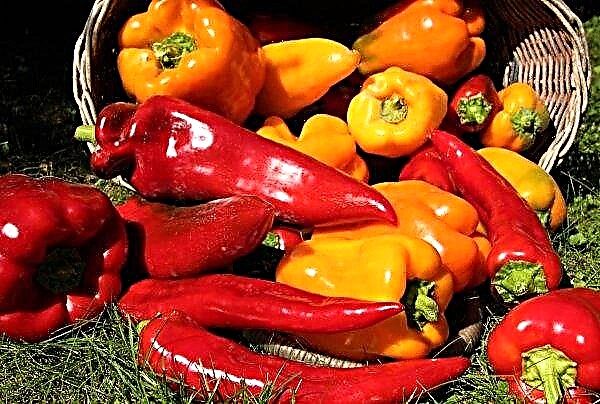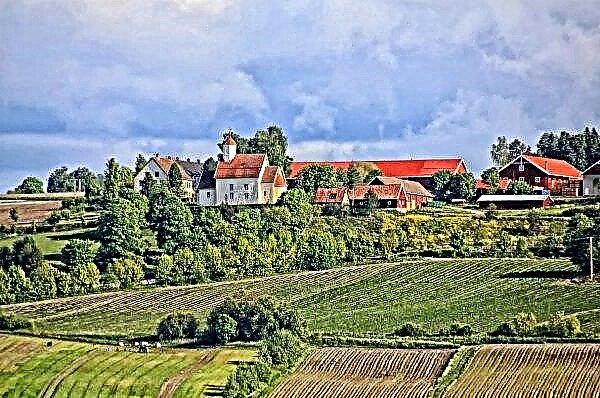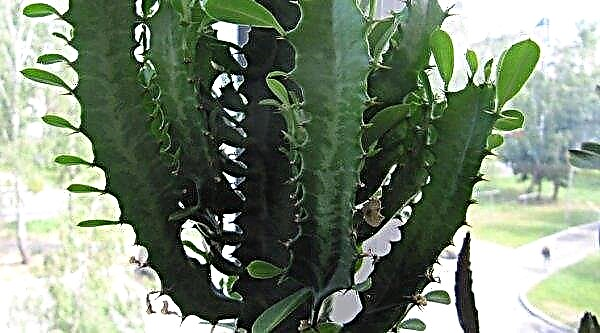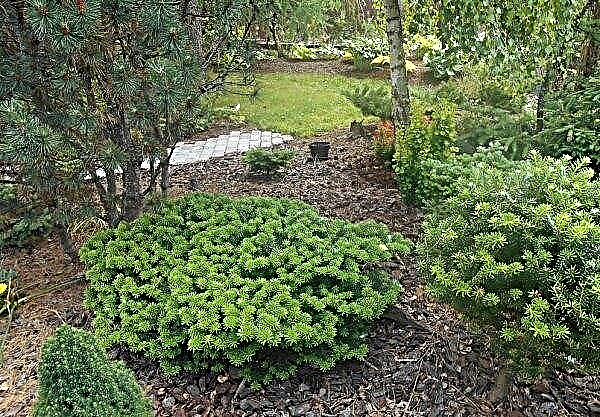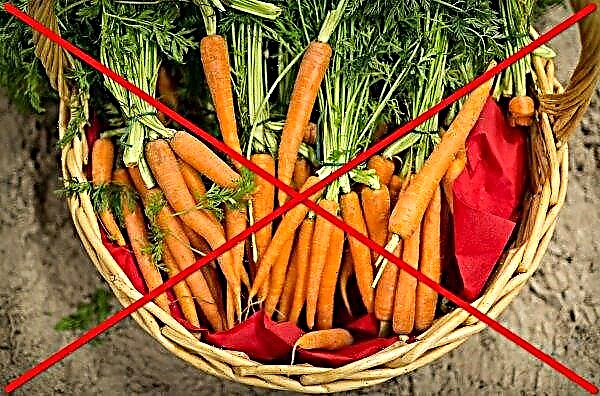Among lovers of indoor floriculture, Kalanchoe Degremon is well known, because it is not only beautiful, but also has healing properties. At the same time, even a beginner grower can cope with the care of him. Familiarize yourself with the rules for growing this species and may soon find yourself among its owners.
Botanical description of the plant
Kalanchoe Degremona (Daigremont), Kalanchoe daigremontiana, naturally lives in the tropics of southern countries.
Botanical description of Kalanchoe Degremon:
| Indicators | Characteristic |
| Root system | Well developed, roots strongly branch, but short, very sensitive to injury |
| Stem | Straight, not branching, thick, 0.6–1 m long |
| Leaf shape | Triangular, fleshy, with serrated edges bent inward, the ends are pointed, brood buds grow on the edges, from which small copies of the plant appear |
| Leaf color | Grayish green on top, gray with light purple spots on the bottom |
| Flower shape | Tubular, bell-shaped, petals rounded, 2.5 cm long and 1.5 cm in diameter, grow on long pedicels |
| Flower color | Pink red |
| Fruit shape | Multi-seed flyer |
| Fruit color | Light green |
Kalanchoe Degremon blooms differently than most other indoor plants:
- the process occurs irregularly, although the time period remains from January to May;
- flowering lasts about 2 weeks;
- flowers appear only when the plant begins to care less;
- after flowering, Kalanchoe most often dies, although enhanced care can save it.
Did you know? In nature, in conditions of an anhydrous and hot desert, wild plants of Kalanchoe Degremon can reach 2–4 meters in height.
Healing properties
Degremona has the following medicinal properties:
- Anti-inflammatory - stops the effect of the stimulus on the damage.
- Wound healing and hemostatic - burns, frostbite, ulcers, damaged gums and skin, cracks in the nipples and wounds heal faster, while the scars remain less noticeable.
- Bactericidal - suppuration disappears, dead tissue is removed, dysentery stops.
- Antiviral - Interferon production is stimulated, the body successfully fights polio, herpes and enteroviruses.
- Biostimulating - inhibits the development of mold, protozoa, while simultaneously exhibiting low toxicity to humans.
- Painkiller - relieves pain sensitivity.

House growing conditions
To grow Kalanchoe Degremon, you must adhere to such conditions:
- equip the necessary lighting;
- provide access to fresh air;
- maintain the desired temperature;
- Avoid excessive humidification.
Lighting
The plant loves an abundance of light, but in the absence of direct sunlight, therefore, in the spring and summer, the location on the windowsills of windows facing the south is undesirable. There you can rearrange the pot with Kalanchoe in winter, when the lighting is poor. In the summer at noon, it is necessary to protect the flower from the sun.
Ventilation
Degremona calmly reacts to drafts and really needs fresh air, but the direct blow of cold air from the air conditioner is dangerous for him. It is useful for the plant to be in the warm season on the balcony or in the garden.
Temperature mode
Ideally, the temperature should be between + 15 ° C and + 22 ° C, but + 10 ° C is allowed. Temperature jumps are not dangerous for the plant.
Air humidity
Since in nature Degremon grows in arid conditions, it is not necessary to spray it at home. However, the accumulation of dirt and dust on the leaves is harmful for her, so cleaning with a damp cloth or shower is necessary. To prevent stagnation of moisture, after the procedure, the leaves are wiped.
Did you know? To restore strength after heavy mental and physical exertion, you can eat 1 sheet of Kalanchoe, chewing it thoroughly before swallowing.
How to care at home
Caring for Kalanchoe Degremon includes the following procedures:
- watering;
- fertilizer;
- circumcision;
- transplantation.

Watering
The plant must not be watered too often, otherwise it will rot. The soil should dry completely before the next watering, and after the procedure, water should not stagnate in the pan. The approximate watering interval is 1 time in 2 weeks in the winter and 1 time per week in the summer.
For watering use:
- cool, settled water in the summer;
- Settled water at room temperature in winter.
You should adhere to such watering methods:
- In summer, water under the root, without splashing the leaves.
- In winter, fill the pan with water.
Important! Do not allow the soil in the pot to be wet in winter - this will lead to the death of the plant.
Top dressing
Fertilizing is necessary only in the warm season, when Kalanchoe is actively growing, with a frequency of 1 time per month. In winter, stop fertilizing. For top dressing, it is necessary to purchase special complex fertilizers designed for this type of plant. The complex is dissolved in warm water, cooled and watered with soil.
Pruning
Degremona needs pruning during periods such as:
- At the stage of stem formation. In spring, the top of the plant is plucked off, otherwise it is pulled up strongly, dropping the lower leaves and exposing the lower part of the stem.
- A highly elongated plant can be shortened by trimming to ½ of its length.
- When weak shoots appear, they are removed.
- Too old a plant can be rejuvenated by cutting the stem to 2 lower leaves.
- After the flowers fall, you need to prune the peduncle.
Transfer
Due to the active growth of the root system up to 5 years of age, the plant is transplanted every year, then after 1-2 years. In order not to interfere with his growth, the procedure is carried out in early spring. You can recognize the onset of transplantation by the roots looking out of the drainage holes.
The process technology looks like this:
- Choose a pot (preferably ceramic, unglazed) with drainage holes that will exceed the old diameter by 2-3 cm.
- Prepare the substrate: mix garden soil, humus and coarse sand in equal proportions, or buy in the store a special soil for this type of plant.
- Lay a 2 cm thick drainage layer in the pot (for example, expanded clay or a brick broken into small pieces). Pour a small layer of soil.
- Water the soil abundantly in an old pot.
- Remove the Kalanchoe together with the soil from the old pot and, together with the old soil, transfer to a new one. Moisten the tips of the roots adhering to the walls with water.
- Empty the spaces between the earthen lump and the walls of the pot with a fresh substrate.
- After a week, apply fertilizer.

The soil requirements for Degremon are:
- friability;
- breathability;
- high moisture permeability;
- acidity level 5–6.5 pH.
Video: Kalanchoe Degremon transplant
Breeding
Kalanchoe Degremona can reproduce independently with the help of daughter plants growing along the edges of the leaves. These sprouts have their own roots, which are fixed in the ground after separation from the mother plant. To avoid the spontaneous growth of Kalanchoe Degremon, you can lay the surface of the soil in a pot with natural or artificial stone.
In addition, the plant is propagated in 2 ways:
- cuttings;
- seeds.
Cuttings
The cuttings method is suitable if the stem of the Kalanchoe is not damaged. With a sharp knife, it is necessary to cut off the top, clean it of leaves growing near the cut, and leave for a day. In a prepared small pot with a moist substrate, plant the stalk to a depth of not more than 5 cm and lightly tamp the ground. You can also pinch off the sheet, plant it in the ground, cover with a glass cap or plastic wrap until rooting, ventilate twice a day.
Seeds
Reproduction by seeds takes a lot of time and effort.
- It is necessary to collect seeds from the fruit box, plant them in moist soil.
- Then cover with a film or a glass cap and send to a dark place.
- In the morning and in the evening, the shelter must be removed for a few minutes to provide access to fresh air.
- Simultaneously with airing the soil needs to be watered.
- When shoots appear, the shelter is removed, the sprouts are transplanted into separate pots of a suitable size and transferred to a lighted place.
Growing difficulties
Growing Kalanchoe Degremon, their owners may encounter such problems:
- the plant does not bloom;
- he was struck by a disease;
- it was invaded by pests.

Why does not bloom
The absence of flowers can be caused by such reasons:
- Lighting does not meet requirements. Direct sunlight in the middle of the day or short daylight near a window facing north is contraindicated for the appearance of flowers. Move the pot with the plant to a place not far from the southeast window where the sun does not shine directly.
- Excessive watering. The lack of water is better tolerated by the plant than the excess. Increase the interval between watering, let the land dry.
- Dry air. The place near the heating appliances is not suitable for Kalanchoe, the pot must be moved.
- Lack of cropping. Degremon is invested in his own growth instead of the appearance of flowers. Trim the stem and peduncle annually.
Important! After flowering is complete, top dressing is necessary, otherwise a weakened Degremon may die.
Disease
Kalanchoe Degremona is affected by such diseases:
- Leaf fall Is a symptom of a lack of fertilizer. The plant needs to be fed.
- Leaves turn yellow, fall from below Is a symptom of a lack of lighting. Move closer to the window or install an additional lighting lamp.
- Dark spots on the leaves It is a symptom of low temperature or high humidity. Move the pot to a warmer place or increase the interval between waterings.
- Fungal diseases (powdery mildew, late blight, gray rot) - appear in the form of cloudy drops, stains, drying and decay, occur due to excess moisture. The affected parts are removed, watering is reduced, and fungicides are treated.
- Viral diseases - The symptoms are light spots and circles with fuzzy edges on the leaves, their deformation. Do not respond to treatment.

Pests
Kalanchoe Degremon can be affected by pests:
- Aphid - These are small insects of green color, a characteristic feature is the presence of a sticky coating. For the fight using insecticides, soap solution, tincture of tobacco dust.
- Shield - it is brick-colored insects, a characteristic feature is the presence of sticky drops. To combat use soapy water and fungicides.
- Root worm - a white worm 2-3 mm long, living on the roots. When it appears, the plant begins to wilt. To eliminate, it is necessary to remove the plant from the old pot, treat the roots with fungicides, transplant into a new pot with new soil, increase the interval between watering.
- Spider mite - Symptoms are the appearance of a web on the back of the leaves and yellow dots, the death of the leaves. To combat it is necessary to treat with insecticides.
Having planted Kalanchoe Degremon at home, you will at the same time acquire a first-aid kit, since its list of medicinal properties is quite extensive. To avoid difficulties with growing this plant, avoid direct sunlight, once again deny yourself the desire to water it. In response to proper care, it will delight you with beautiful flowering.

